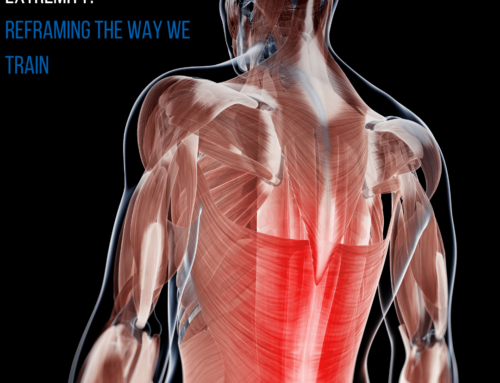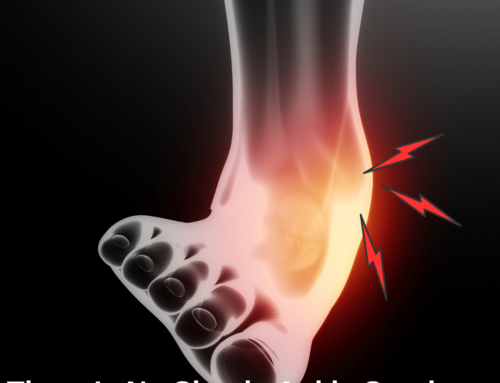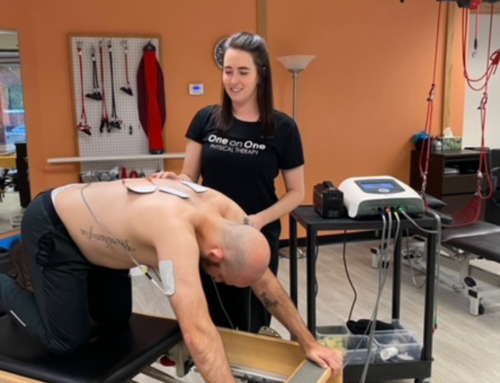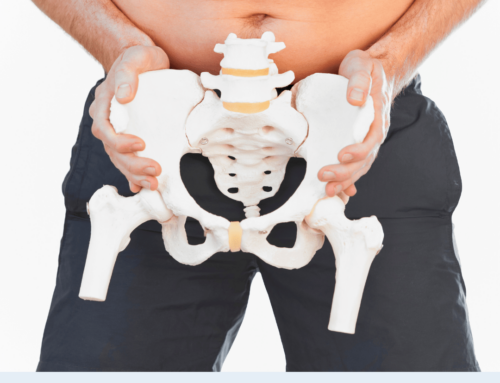Vertigo – and How PT Can Help!

What is Vertigo/BPPV?
Do you find yourself dizzy when you roll over in bed or when going from a lying to a sitting position? Does the room seem to spin around you? Do you feel unsteady or nauseous after changing position or turning your head?If so, you may have something called Benign Paroxysmal Positional Vertigo (BPPV) – more commonly known simply as “vertigo”.
BPPV (Vertigo) occurs when the small calcium-carbonate crystals (called otoconia) within your inner ear become dislodged and float freely within a structure called your semicircular canals. Normally, these crystals do not float freely. However, a variety of factors, such as head trauma, sinus pressure/allergies, viral infections of the inner ear, and Meniere’s Disease, can cause them to be dislodged from their home. Though these conditions can cause BPPV, most cases (up to 70%) occur idiopathically or without any specific known cause. When these crystals are floating out in the canals, they cause the flow of the fluid in the canals to become turbulent instead of steady, which then causes the signals to your vestibular nerve and to your brain to become erratic. These confusing signals result in dizziness because the brain is no longer getting accurate information about where your head is in space. This can also cause a symptom called nystagmus, which is when your eyes beat rapidly in a rotational and vertical manner, resulting in the room feeling like it is spinning. BPPV is usually short-lived. Because once your head comes to rest, the fluid in the canals stops moving, and the crystals come to rest, so the signaling ceases.
Dizziness in and of itself is a very general symptom, and can be representative of a variety of conditions. Oftentimes physicians will prescribe a medication called Meclizine or Anti-Vert for treatment, though it has little to no effect on vertigo stemming from BPPV. The best course of action is to see a provider who is trained in repositioning maneuvers, which are a series of specific movements performed to guide the crystals back into their home, alleviating the symptoms of BPPV.
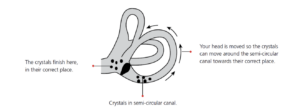
How To Treat It
Physical therapists are trained in these repositioning maneuvers and can treat patients with vertigo. The specific maneuver chosen is based on findings discovered within the examination. They involve a series of moving the patient’s head and/or body in specific directions to facilitate the movement of the crystals.
How Effective is Treatment?
Repositioning maneuvers are HIGHLY effective in the treatment of BPPV; This condition can be cured in as little as a single treatment session. On average, BPPV can be treated within 1-3 treatment sessions.
What To Expect During Treatment
During the repositioning treatments, you can expect to experience your vertigo symptoms, but only for a brief period of time. Following treatment, you may feel uneasy or not quite right. We recommended that you have someone bring you to your appointment and drive you home in case you do not feel safe to do so.
So if this sounds like what you are experiencing and you haven’t been able to find relief – call us today! Let us help you get back to you.
Sources:
Hebert Gaddis, D. “Vestibular Rehabilitation: Differential Diagnosis, BPPV and Introduction to Hypofunction” Upstream Rehab Institute, February 2021, Georgia.
Palmeri R, Kumar A. Benign Paroxysmal Positional Vertigo. [Updated 2022 Dec 26]. In: StatPearls [Internet]. Treasure Island (FL): StatPearls Publishing; 2023 Jan-. Available from: https://www.ncbi.nlm.nih.gov/books/NBK470308/
About the Author:
 Emma brings a wide range of clinical experiences to the One on One team, including orthopedics, sports medicine, post-operative rehabilitation, injury prevention, functional strengthening, pediatrics, vestibular, and concussion therapy.
Emma brings a wide range of clinical experiences to the One on One team, including orthopedics, sports medicine, post-operative rehabilitation, injury prevention, functional strengthening, pediatrics, vestibular, and concussion therapy.
She has completed a residency in Orthopaedics and is Board Certified. She has extensive training in Dry Needling and Manual Therapy, as well as a certification in Blood Flow Restriction Training.
